 Here we are, halfway into January and I’m just now delivering the final words on 2016, but that’s fitting for a year that was pockmarked by delays in updating the blog. I scaled back my reviewer work load last year because 2015’s sheer insane quantity of releases had me nearing burnout stages. It was a beneficial move as a music fan, and a handicap as a blogger, but the hope is that I balanced things out enough to keep an even keel on the writing front going forward. So though the pool of releases I listened to was far less (and less is relative, I’m talking about a scaling down from 120-ish in 2015 to 60-70 in 2016), I felt like I was able to spend longer amounts of time with the ones that captured my attention in one way or another. This list represents the ten best of that pool, selected for not only just how much I listened to them or for their excellence, but also how they affected me personally. As always, I keep these lists to a simple ten instead of twenty-five or fifty to force myself to make difficult cuts and really think about what I loved the most, not just what I happened to listen to. Thanks for reading throughout the year and being patient with me, I hope you’re back for all of 2017!
Here we are, halfway into January and I’m just now delivering the final words on 2016, but that’s fitting for a year that was pockmarked by delays in updating the blog. I scaled back my reviewer work load last year because 2015’s sheer insane quantity of releases had me nearing burnout stages. It was a beneficial move as a music fan, and a handicap as a blogger, but the hope is that I balanced things out enough to keep an even keel on the writing front going forward. So though the pool of releases I listened to was far less (and less is relative, I’m talking about a scaling down from 120-ish in 2015 to 60-70 in 2016), I felt like I was able to spend longer amounts of time with the ones that captured my attention in one way or another. This list represents the ten best of that pool, selected for not only just how much I listened to them or for their excellence, but also how they affected me personally. As always, I keep these lists to a simple ten instead of twenty-five or fifty to force myself to make difficult cuts and really think about what I loved the most, not just what I happened to listen to. Thanks for reading throughout the year and being patient with me, I hope you’re back for all of 2017!
The Metal Pigeon Best Albums of 2016:
Like Lebron James with the Cavs, and the entirety of the Chicago Cubs, Avantasia/Edguy founder Tobias Sammet found himself in 2016 rallying from a deficit. His was an artistic one, that being the 2013 Avantasia release The Mystery of Time, where for the second time in half a decade he was floundering on the songwriting front (Edguy’s 2008 album Tinnitus Sanctus being the first such misstep). That album lacked in several aspects, namely an uninspiring roster of guest vocalists either contributing to or exposing songwriting that seemed forced, and at its worst, half-baked. At the time I wondered whether or not he was spreading himself thin over his two bands, both massive enough that each required lengthy touring commitments that could possibly detract from quality rest and time at home to focus on songwriting at his usual caliber of excellence. I also wondered at just how similar the two projects were beginning to sound, with both The Mystery of Time and Edguy’s The Age of the Joker (2011) sharing similarities for their heavy reliance on orchestral arrangements. There was also the confusion of lyrical subject matter, with Edguy albums receiving equal numbers of Scorpions-esque songs with silly and humorous subject matter in addition to the more typical, serious work. He’d address that problem by compartmentalizing: He launched Edguy into a more leaner, hard rock path with 2014’s Space Police, with a largely tongue-in-cheek, loose, comic approach to the lyrics. Left unanswered was whether he’d further differentiate the two bands by leaning hard in the other direction with a future Avantasia album.
Lean hard he did, and it paid off better than anyone could’ve predicted, because Ghostlights is the greatest Avantasia album of them all (yes, including The Metal Opera Pt I/II). Sammett rolled the dice a bit here as well, picking guest vocalists that quite honestly had me shaking my head no when I first learned of them —- Geoff Tate, Dee Snider, Robert Mason (Warrant/Lynch Mob)… I just didn’t see it working. I had the same feeling when I first saw the guest vocalist listing for The Mystery of Time, a lack of excitement and anticipation that felt empty. This time however, Sammett’s songwriting was renewed, full of confidence and purpose, and in his masterful way he dug deep to deliver songs that brought out the absolute best in each of them. Geoff Tate sounds like his old self again on “Seduction of Decay”, an addictive, Queensryche-ean thriller built on a supremely epic chorus where his vocals carry the load admirably. On “The Haunting”, Snider embodies his character with real dramatic verve and melodic range, while Jorn Lande’s eternal voice brings darkening clouds and swirling winds on “Let the Storm Descend Upon You”. Largely absent are the hard rock tendencies that so confused previous Avantasia albums with Edguy ones, replaced with a darker toned orchestral arrangement throughout that further ingrains this album with its own unique identity.
Lande has one of the album’s three star turn moments on “Lucifer”, as magnificent a piece as Sammett has ever dreamed up, built on Broadway piano balladry that stutter steps into a rocketing, spiraling out-of-control blast of heavy metal theater. The other belongs to another unusual vocalist choice, Sinbreed’s Herbie Langhans, who delivers the album’s most accessible pop-gem in “Draconian Love”, singing in a lower register than we’re used to hearing him in, and it works perfectly in contrast to Sammett’s straight-ahead dual lead vocal as they deliver an absolute ear-worm of a chorus. Of course I’ve already gushed about Sammett’s duet with Bob Catley on “Restless Heart and Obsidian Skies” (alongside Ghostlights it marks the first time the same artist has topped both my songs and albums lists), but its worth reiterating here just how gorgeous and aching this song is. I should also commend Sharon Den Adel’s work on “Isle of Evermore” which might get unfairly compared to her earlier Avantasia contribution (“Farewell” from The Metal Opera), but her vocal here is delicate and shattering, perfect for a ballad that is more about lamentation than triumph. Ah, there’s so much I could point out, but then this would be an album review (which I’ve already written) —- to sum it up, this was my most listened to album all year, and my most loved. Gritty comeback Tobias, one for the ages.
People have written a lot over the years about the beauty of Alcest’s music, and how its sonic deconstruction of black metal has liberated the genre forward into exciting new directions. Maybe too much was written, so that their distinctly French take on black metal was spread so far and wide to such an extent that copycats sprung up in every corner of the world. In the past few years, they’ve almost become an after thought in elitist metal circles whereas lesser bands who’ve been directly influenced by these pioneering Frenchmen have soaked up the limelight for themselves. There was a time when I myself tried to brush off Alcest, albeit in a willfully ignorant manner —- that is until I heard their 2012 masterpiece Les Voyages de l’Âme, and was unable to ignore them any further. It was a hypnotic album, full of music that demanded adjectives that metal writing doesn’t usually inspire… beautiful, elegant, breathy, meditative, dreamy… descriptors that could easily apply to the new Enya album (which was fantastic by the way). Fascinatingly enough, when Alcest attempted to distance themselves from metal entirely on 2014’s Shelter, they made the most listless, flat, and boring album of their career. They’ve since returned to embrace their black metal influences on Kodama, and it signals to us that Neige perhaps understands that he paints more skillfully when he has all the colors available to him, not just the bright and cheerful ones.
I’m going to have to police myself in not getting too flowery with my descriptions here, because its such an easy temptation with Alcest because that’s the headspace their music puts you in. The theme that encompasses this album is far more interesting to comment on anyway —- “Kodama” itself is a reference to creatures found in Princess Mononoke, a film whose central conflict between the natural and human worlds also tied into Neige’s growing fascination with Japan. Specifically he was intrigued by how such a technologically immersed society still holds onto and embraces nature, tradition, and spirituality. As a result Kodama shimmers with cultural influences, down to the flavor of the melodies themselves, imbued with Japanese folk patterns that work as musical leitmotifs throughout the album. I wrote in greater detail about this in my original review, so here I’ll just use one moment as an example of why I love this album so much. At the end of “Eclosion”, around the mid six minute mark, the song spirals into a closing instrumental sequence, but instead of opting for a grandiose finish Alcest isn’t afraid to employ a minimalist approach —- allowing the song to hush to an end as lonely notes flutter upwards. It took a few listens before I caught the realization that it was merely the same melody that had been played throughout the entire song simply stripped of distortion and aggression. Deconstruction as an art form, not just an art term.
3. Trees of Eternity – Hour of the Nightingale:
There’s a sentiment in the minds of many as we slog on through December, that being done with 2016 would be a welcome relief. From poisoned politics to natural disasters to the passing of beloved celebrities, icons, and artists, it was a rough twelve months indeed. For us in the metal world, there’s likely no one that endured as much raw grief and pain as Swallow the Sun’s founding guitarist Juha Raivio. He had to endure the tragedy of the passing of his longtime partner, Aleah Liane Stanbridge, who sadly lost her battle with cancer in April. She’s not a name that’s well known even among the metal world at large, but anyone who paid attention to the last Amorphis album Under The Red Cloud or Swallow the Sun’s triple disc Songs From the North would’ve heard her beautiful voice on some of their songs. She was also an experienced professional photographer, shooting a various range of projects —- the most notable and recent being the covers of the aforementioned Swallow the Sun album. Trees of Eternity was a project she and Raivio dreamed up many years ago actually, releasing a demo in 2013 and actually recording their one and only full length album in 2014. There’s scant details to go on except what Raivio has chosen to state himself on his social media, but at one point the album was rejected by a prominent metal label (who knows why), and it was shelved indefinitely. Credit to Raivio for pulling together the emotional fortitude needed to finally release what would be called Hour of the Nightingale (and credit Svart Records for coming to the rescue) in November of 2016. Its simultaneously a tribute to Aleah’s memory, and a reminder of what we’ve all lost as a result.
Trees of Eternity aren’t that far removed from the mellower, more quietly introspective side of Swallow the Sun, albeit with Aleah’s shimmering, ethereal vocals cascading throughout. This is an album built on calming tempos, rises and swells, slow building crescendos, and an almost dreamy sonic palette. That’s not to say it can’t get heavy —- Raivio’s guitars at times hit with force and a satisfying crunch (see the single “Broken Mirror” for this), but generally a cut such as the lullabye-esque “Sinking Ships” is far more representative. When things do veer into heavier directions, its that distinct Swallow the Sun mold of doom metal washing over everything, and its Aleah’s vocals that contrast with its tone so perfectly, yet still complementing its mood and spirit. I was taken aback by how much I immediately fell under the spell of Nightingale, first listened to on a nighttime drive to the MSRcast studios to record an episode of the podcast. I immediately blubbered to my co-host Cary about how this might be something to talk about when it came time to put our year end lists together. I briefly wondered if it was the circumstances surrounding the album’s backstory that were influencing my opinion —- but the truth is that this has been on heavy rotation since then, usually played at night when its power is far more manifest. This is a bittersweet experience, a perfect melodic doom metal album that was released with heavy hearts, and one that leaves a lasting shadow over ours as we listen.
 4. Hatebreed – The Concrete Confessional:
4. Hatebreed – The Concrete Confessional:
It seems that every year that I’ve been doing this blog, and probably in the years preceding that, I’ve gotten into a band that I’d ignored or dismissed altogether before. In 2016, that band was surprisingly Hatebreed, a road I was led on when my MSRcast co-host Cary recommended that I check out vocalist Jamey Jasta’s podcast The Jasta Show. I was instantly hooked, and soon enough curious to give old Hatebreed another listen as they were one of those bands that I had long ago pegged as that other heavy music (hardcore/punk/whatever) that wasn’t meant for the likes of me. I listened to their Perseverance album on Spotify and was completely surprised that I was enjoying it, and that soon extended to their other albums too. It was music that was getting me back in tune with the idea of just enjoying heaviness as a tangible quality —- nothing complicated going on, just very heavy riffing and screaming vocals that was simple but extremely catchy (Jasta even refers to his music as “neanderthal metal”), with hooks arranged for maximum impact on your adrenal glands. It was like a palette cleanser in a way during a year filled with wildly diverse metal releases. By April, I was actually anticipating the release of a new Hatebreed album so much that I bought the digital download on release day.
What’s astounding about The Concrete Confessional is how it might actually be my favorite Hatebreed album of them all, and though I’m too new to the party to suggest it might be their best… I very well think it is. More than any other album, this was my soundtrack to 2016 —- a pissed off, vicious, scathing, and intelligent lyrical attack upon government, society, and modern culture set to ferocious thrash metal guitars . That attribute is the most surprising facet of the album, that it actually comes across as more post-1990 Slayer than Converge or old Rise Against. Take “A.D.” (a best songs listee!), where guitarists Frank Novinec and Wayne Lozinak unleash riffs at breakneck speed, even completing the aforementioned Slayer comparison with an evil Jeff Hanneman sounding bridge at the 1:33 mark. Or going the other direction, listen to the outpouring of melodicism present in “Something’s Off”, with guitars that owe more to Iron Maiden-esque sensibilities as the provide the musical refrain throughout. More than just the music though, it was Jasta’s always inspired way with words in conveying the rage that we all tend to feel and sometimes can’t properly express. I listened to this album constantly, it was a refuge and a comfort, the soundtrack to stressful days and restless nights.
This was a surprise and a reprimand at once, a wooden spoon smacking of thy hand that I hadn’t listened to Haken sooner, even though they were already recommended to me by a few people (and they were right, the previous album The Mountain was excellent). As with Alcest above, Haken put a lot of thought into their albums, and Affinity is no exception, being a thematic album about man and machine and the idea of artificial intelligence. And just like Alcest, they filter this concept into the fabric of the music itself to better depict the theme —- in the case of Affinity by infusing their prog-rock with 80s electronic music influences that remind us of Rush, and early 80s Toto and Van Halen. What I love about prog-bands such as Haken is the admirable attention to detail in ambitious projects like these, from the Atari/Nintendo styled electronic bridge in the song “1985”, to the album artwork that references classic tech/computing advertising of the 80s (which cleverly employs the birds that graced the cover of The Mountain). Together all these aesthetic details accumulate into a larger, cohesive experience, one that allows the actual songs to have gravitas and intellectual weight behind them.
Speaking of, the songs here are magnificent, from sprawling epics like “The Architect” to pop gems such as “Earthrise” (a best songs listee!). The former features a guest spot by Einar Solberg of Leprous (who also had an awesome drop in moment on the recent Ihsahn album) and runs the gamut from fierce metal passages to futuristic sounding prog moments that remind of Porcupine Tree’s Fear of a Blank Planet. I’ve gushed about “Earthrise” enough already, but it really is an incredible song, with the kind of chorus that present day Anathema would be proud of. My other major favorite is “1985”, the keystone song of the album (being written first, it inspired the direction the band took for the project) that at times sounds more like Rush than Rush themselves, and has an amazing chorus that switches from a soaring, major key vocal melody to the fattest, heaviest bottom end bass and guitar riff that you never expected. I could point out other moments just like that, but to cover it in a nutshell, these songs just keep you guessing and surprised at every bend. That wild diversity is a trademark of Haken’s, a glimpse of their vivid creativity and imagination, and their willingness to bend both the rules of prog-rock and their listeners’ expectations.
One of the most positive leaning metal albums in a year full of anger and despondency, Myrath’s Legacy was a much needed refuge. The prog-power yang to Orphaned Land’s death metal yin in the small but growing niche of “oriental metal” from the Middle-East, Myrath made a huge artistic leap forward with Legacy. Five years separated it from its 2011 predecessor Tales Of The Sands, and the band honed their songwriting in that span of time —- toning down the prog-metal flourishes (which to be fair they never really overdid), leaning far more on pop accessibility, and strongly emphasizing their cultural folk musical elements. The latter comes in the form of Arabic melodies delivered via an actual string section, and they actually carry the musical load of a majority of these songs, the guitars often taking a backseat. This doesn’t make things less metallic, but guitarist Malek Ben Arbia simplifies his approach, approaching his guitar work in a manner that’s more Kamelot than Symphony X. On the best songs listee, “Believer”, this approach pays dividends in delivering the most cinematic and earwormy cut of their career, the strings and Arabic-phrased choral vocals working in tandem to deliver a knockout hook.
Speaking of vocals, Zaher Zorgati is one of the more expressive and unique singers in heavy music, rhythmic in his lyrical phrasing, able to bend the English language in appealing ways by virtue of his accent and sheer ingenuity —- and he drops moments that ache with authenticity when he sings in Arabic as in “Nobody’s Lives”. We’ve all heard those metal albums where bands attempt to add in some pan-Arabic sounds, be it through awful keyboard orchestrations that pull from schlocky Hollywood movie soundtracks or by simply playing a few bent notes or phrases. Myrath transcend all that with songwriting that is steeped in the cultural music they grew up with. They’re a Tunisian band (recently relocated to France) and Legacy is streaked with imprints of the Jasmine Revolution in its optimism and beautifully expressed yearning for freedom. Its was a surprise to read the lyrics and realize that most of these tracks were indeed love songs, the unnamed narrator expressing either his devotion or lamenting his loss thereof. Whether the subject of these love songs was left up to the listener only Myrath themselves know, but they could easily be about a woman, a country, or an ideal. In that sense, I think they succeed in making something really fresh, much like Orphaned Land’s All Is One, where Orientalist imagery is manipulated to discuss issues that matter to people —- and not just to those in the Middle-East, but all people.
 7. Thrawsunblat – Metachthonia:
7. Thrawsunblat – Metachthonia:
Born from the smoky woods and rocky shores of New Brunswick, Thrawsunblat unleashed the finest folk-metal album of the year, a strange thing to say about a band from Canada but there you go. They’re likely to have sailed under more than a few radars, and I hope Metachthonia‘s presence on this list changes that in a small way, because they really are worth your time. Thrawsunblat can be considered a spiritual sibling to Woods of Ypres and its departed founder David Gold, who co-founded this band as a side project with ex-Woods guitarist Joel Violette. I’ll refer you to my original review if you’re interested in details about this project’s origin, but suffice to say Violette has turned the band into his main priority in the years since. He delivered a promising debut album in 2013 that merged a fresh, maritime folk influence with rootsy black metal, yielding some awesome songs in the process (“Maritime Shores” and “We, The Torchbearers” to name a pair). This sound is the blazing of a new trail in both North American black metal and folk metal, a merging of sounds from both sides of the Atlantic much in the same way that Panopticon has done so from Appalachia. His second album, Metachthonia, is a further refinement of this relatively new sound, one that pushes the black metal extremity forward and more seamlessly interweaves the still rich folk influences.
I believe I originally referred to Moonsorrow and Borknagar as touchstones in Metachthonia‘s particular black metal strain, and I still stand by those comparisons. They both have that roots in the earth warmth to their sounds (moreso in Borknagar’s later albums Urd and Winter Thrice), despite their capacity for raw fury, and I hear that coming through in Violette’s songs. He has an uncanny way to marry minor key built melodies with his often atonal vocal lines to astonishingly tuneful and melodic results, such as in “She Who Names The Stars” where the album’s most blistering passages lurk. You get another taste of that in “Dead of Winter”, where Violette wields dissonance like a malleable piece of clay and fashion out the most hooky tremolo riffs this side of Ulver. As a vocalist, he instantly reminds me of Gold himself in both clean and grim vocals, and I wonder if he’s not channeling that (either consciously or somehow subconsciously). I can’t deny that I started investigating Thrawsunblat because of the Gold connection directly, but with Metachthonia Violette has found a voice all his own.
As I mentioned in my intro, I haven’t read many best of lists as of yet, a lesson I learned a few years back when first publishing my own lists to not allow others to influence me. Most of those come out in early to mid December we all knew my list wasn’t getting up that soon! But I will be going around scoping out what everyone else picked out on various metal and non-metal publications and blogs, and I’ll be surprised and a little suspicious of any list that doesn’t feature Insomnium’s bold and daring Winter’s Gate. I describe it as such because its such an abrupt departure from their self-made Finnish take on melo-death —- polished, pristinely recorded, full of melancholic melody set to a tempo that hovered around mid-tempo and contemplative. For this narrative concept album, the Insomnium guys got meaner, darker, faster, heavier, and at times, downright brutal. They managed this by injecting their sound with ample doses of black metal tremolo riffing and blastbeat percussion, while vocalist Niilo Sevänen pushed his vocals to a level that can only be described as ferocious, his guttural screaming racing towards you with the intention of a hungry wolf in pursuit of his prey.
This was an album of risks, not only for the aforementioned sonic changes, but for the fearlessness in crafting one forty minute song and releasing it as a singular track (for the physical album, the digital release was broken into seven “parts”, presumably for the purposes of streaming/iTunes sales). If you were one of those physical album buyers like myself, you simply had to submit yourself to a complete album listening experience without the luxury of skipping tracks whenever your twitchy, media-overloaded brain got an impulse to. You were rewarded with one of those rare albums where a flowery description such as “musical journey” was actually applicable, and while this was enhanced by following along with the lyrics and the Sevänen crafted short story it was set to, the high drama of the music was enough to keep our attention on its own. I’ve yet to talk to someone who was “meh” about Winter’s Gate (if you were, by all means post in the comments below!), because I just don’t think anyone expected this out of them. I think most people were lukewarm about 2014’s Shadows From A Dying Sun, and it seems the band also felt that they were slipping into complacency. Its not my favorite Insomnium album (that honor still goes to One For Sorrow), but I wouldn’t fault anyone for saying its theirs.
Only a little over a month separates this from my original published review of Theocracy’s long-awaited Ghost Ship, but unlike in 2014 where the album of the year winner Triosphere’s The Heart of the Matter was released in December (and was the most unexpected dark horse in Metal Pigeon history), I’d actually been listening consistently to the new Theocracy since late October when it was released. The delay in publishing my review ended up delivering a more accurate take on the album, because it was definitely a grower. At first it wasn’t registering in the same instantaneous manner that their previous two albums were, but as I sussed out in that review, this was largely due to Matt Smith and company injecting these songs with progressive metal elements and stepping away from the pure Euro-power metal track they’d previously been running on. This is an album that deserves the benefit of extra listens and a touch of patience, because there is such a wealth of musical ear candy to rot your ears with here (I mean that in the best way) if you just allow these songs the time to sink into you.
The uptempo, seemingly joyous sounding “Castaway” was listed as one of the year’s best songs, but it was only one highlight among many, such as “Currency In A Bankrupt World”, where the vocals channel Sebastian Bach/Skid Row circa 1992’s Slave to the Grind, while the guitar patterns during the verses expertly channel vintage Queensryche. Smith’s an exceptional vocalist, his highs capable of registers that stop just short of helium heights, still retaining power and downright grit and grime. He has the vibrato of late 90s Tobias Sammett and actually might be a better technical vocalist overall in comparison thanks to his American born ease with pronunciation and phrasing. The band he’s built around his songs excels not only technically, but in achieving that difficult middle ground between surgical technical precision and rock n’ roll swagger, their performances exuberant and barely restrained. Its such a wonder that Theocracy are an American band, despite their European musical foundation, and they’re continuing to succeed while many European bands have lost their way. And also that I, as a secular/non-religious person am able to find myself connecting with music and even lyrics that are written by a devout Christian, for the purposes of expressing and exploring his faith. Metal succeeds where religion cannot.
 10. Death Angel – The Evil Divide:
10. Death Angel – The Evil Divide:
I was absolutely convinced that I had written a review for this album shortly after its early summer release, but a trawl backwards through the archives proves me wrong. Strange that… but I guess I thought I did based on just how much I’ve listened to this album over the second half of 2016, returning to it again and again. I’ve only paid attention to a few fellow bloggers 2016 lists (I like to avoid the possibility of influencing my own), but I did watch BangerTV’s Lock Horns Best of 2016 show, and before they aired that they released a Best Thrash Albums of 2016 episode —- asking aloud the question, “(The)Year of Thrash?”. Perhaps they’re right because as that episode suggests, it was a banner year for thrash metal across the spectrum of the subgenre, from the big four to old vanguards such as Testament and newer bands ala Vektor. I’ve never been the biggest Death Angel fan, lamenting the thin vocals of their early records while loving the musicianship and yet finding that their post-reunion albums weren’t catching my attention either despite vocalist Mark Osegueda’s much deepened range. So I was caught entirely off guard by how much I loved The Evil Divide, an album that is a watershed for the band creatively —- full of risks and rewarding payoffs, as well as a truly convincing display of aggression that matched Hatebreed in terms of viciousness for 2016 releases.
Album opener “The Moth” is one of the most adrenaline-pumping, kick down the door songs you’ll ever hear, with that perfect mix of speed and thrashy rhythmic syncopation throughout. The muscular build up to the refrain built on tribal drum beats is somehow one-upped by the fierceness of the chorus, with blazing fast riffs that accelerate nearly out of control as crisp, precision hit gang vocals land, “We die together!”. But the real gem on the album is “Lost”, perhaps Death Angel’s finest moment ever, mid-tempo(!) in its groove and built upon an ascending melodic bridge/chorus that sees Osegueda carrying a song with his vocals alone. He’s a convincing mid-tempo vocalist, full of grit and yet able to somehow smooth that into an actual minor key melody that you could really call a hook. Its almost Hetfield-ian in its pacing and delivery, and that’s surprising not only for its unexpectedness but also for just how carefully it was written. That’s something that defines the entirety of this album, a sense of confidence and purpose in its craftsmanship. We get that feeling because the heaviness doesn’t feel cheap or gimmicky, it feels like a long carried weight, finally unburdened.











 Happy New Years everyone! Alright I’m a little late, but I wanted to let those year end lists marinate out there for a bit before issuing another update, as well as allowing myself a little break from any kind of “required” listening. How have I spent my intervening few weeks off listening wise? Oh you know, a little sweeping balladry from Sarah Brightman, revisiting classic Celtic-punk albums by The Pogues, reveling in Basil Poledouris’ epic score for Conan the Barbarian (the original 1982 classic, mind you), and metal-wise blanketing myself with loads of classic Blind Guardian as a side effect of my now unrestrained anticipation for their new album. Regarding the latter, its our favorite bards who instantly win the crown for the most anticipated album of 2015 —- I mean, who are we kidding here? The German legends may be skirting the edge of their regular four year studio release schedule (that ‘2015’ is going to throw off the 98-02-06-10 symmetry of their last four albums), but in these final weeks leading up to the release of Beyond the Red Mirror, I’m remembering everything I love about the band and all is forgiven. That being said, what are the runners up as my most anticipated metal releases/events?
Happy New Years everyone! Alright I’m a little late, but I wanted to let those year end lists marinate out there for a bit before issuing another update, as well as allowing myself a little break from any kind of “required” listening. How have I spent my intervening few weeks off listening wise? Oh you know, a little sweeping balladry from Sarah Brightman, revisiting classic Celtic-punk albums by The Pogues, reveling in Basil Poledouris’ epic score for Conan the Barbarian (the original 1982 classic, mind you), and metal-wise blanketing myself with loads of classic Blind Guardian as a side effect of my now unrestrained anticipation for their new album. Regarding the latter, its our favorite bards who instantly win the crown for the most anticipated album of 2015 —- I mean, who are we kidding here? The German legends may be skirting the edge of their regular four year studio release schedule (that ‘2015’ is going to throw off the 98-02-06-10 symmetry of their last four albums), but in these final weeks leading up to the release of Beyond the Red Mirror, I’m remembering everything I love about the band and all is forgiven. That being said, what are the runners up as my most anticipated metal releases/events? Angra – Secret Garden: One of the first cannon shots of 2015 is the debut of Fabio Lione in his role as Angra’s third official vocalist, being the successor to Edu Falaschi who left in 2012. Look, I wasn’t wild about the Edu era although it had its occasionally good to great moments, but I’m completely un-enthused about the very idea of the Lione era. I was never sold on Rhapsody (of Fire ™), in large part owing to how little I found to like about Lione’s thin, wafery delivery. I respected the heck out of the guy for helping out Kamelot on their Khan-less tour a few years back, despite having to acknowledge that his vocals were completely wrong for the band’s tone and mid-tempo stylings. So on paper Angra should be a better fit for him than his stint in Kamelot, but the pre-release single “Newborn Me” is completely underwhelming so far. It won’t be long before I drop a review of this one, Angra daring to challenge Blind Guardian with a January release (the very idea…).
Angra – Secret Garden: One of the first cannon shots of 2015 is the debut of Fabio Lione in his role as Angra’s third official vocalist, being the successor to Edu Falaschi who left in 2012. Look, I wasn’t wild about the Edu era although it had its occasionally good to great moments, but I’m completely un-enthused about the very idea of the Lione era. I was never sold on Rhapsody (of Fire ™), in large part owing to how little I found to like about Lione’s thin, wafery delivery. I respected the heck out of the guy for helping out Kamelot on their Khan-less tour a few years back, despite having to acknowledge that his vocals were completely wrong for the band’s tone and mid-tempo stylings. So on paper Angra should be a better fit for him than his stint in Kamelot, but the pre-release single “Newborn Me” is completely underwhelming so far. It won’t be long before I drop a review of this one, Angra daring to challenge Blind Guardian with a January release (the very idea…).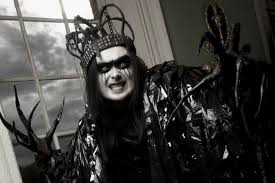 Cradle of Filth – Hammer Of The Witches (working title): In the past few years, the idea of a new Cradle album was met with a sad level of indifference from myself and as it seemed many others. Paul Allender’s role as guitarist was long past its expiration date, heard in recycled riffs and uninspired songwriting. Yet his departure in 2014 was surprising as it was enticing —- with all due respect to Allender, its now transparently obvious that he wanted to move on years before but the relatively steady nature of Cradle’s existence and operations kept him around for years and albums longer. The new guitarists, two guys named Ashok and Richard Shaw (there’s some dichotomy for you) are relatively unknown quantities, but Dani’s recent
Cradle of Filth – Hammer Of The Witches (working title): In the past few years, the idea of a new Cradle album was met with a sad level of indifference from myself and as it seemed many others. Paul Allender’s role as guitarist was long past its expiration date, heard in recycled riffs and uninspired songwriting. Yet his departure in 2014 was surprising as it was enticing —- with all due respect to Allender, its now transparently obvious that he wanted to move on years before but the relatively steady nature of Cradle’s existence and operations kept him around for years and albums longer. The new guitarists, two guys named Ashok and Richard Shaw (there’s some dichotomy for you) are relatively unknown quantities, but Dani’s recent  Dimmu Borgir – TBA: It will likely be just over five long years since the release of Dimmu’s last album, the unfortunately titled but otherwise decent Abrahadabra. I loved the eponymous “Dimmu Borgir” off that album, one of the band’s catchiest singles in years (it had a pretty decent music video too), but the majority of the album made me wonder how much there was possibly left to explore in their heavily symphonic black metal style. I’m not really sure what to expect from these guys now, but it really seems like a stylistic evolution ala Satyricon might be in order. Blut Aus Nord just dropped a new album of classic Norwegian second wave black metal that is bracing, fresh, and revitalized… proving in one fell swoop that there’s still life left in the old traditions. Maybe the way forward for Dimmu is to look back in order to progress their sound. More of the same from them would be disappointing in a way, especially after a five year gap.
Dimmu Borgir – TBA: It will likely be just over five long years since the release of Dimmu’s last album, the unfortunately titled but otherwise decent Abrahadabra. I loved the eponymous “Dimmu Borgir” off that album, one of the band’s catchiest singles in years (it had a pretty decent music video too), but the majority of the album made me wonder how much there was possibly left to explore in their heavily symphonic black metal style. I’m not really sure what to expect from these guys now, but it really seems like a stylistic evolution ala Satyricon might be in order. Blut Aus Nord just dropped a new album of classic Norwegian second wave black metal that is bracing, fresh, and revitalized… proving in one fell swoop that there’s still life left in the old traditions. Maybe the way forward for Dimmu is to look back in order to progress their sound. More of the same from them would be disappointing in a way, especially after a five year gap. Enslaved – In Times: Due in early March, the next Enslaved album is right up there among my most anticipated of 2015, this despite the band’s frustrating lack of Texas tour dates on yet another “North American” tour. That aside, I’m eager to hear what direction these guys veer off into this time. Their last album RIITIIR (a 2012 year end
Enslaved – In Times: Due in early March, the next Enslaved album is right up there among my most anticipated of 2015, this despite the band’s frustrating lack of Texas tour dates on yet another “North American” tour. That aside, I’m eager to hear what direction these guys veer off into this time. Their last album RIITIIR (a 2012 year end  Faith No More – TBA: If the band’s 2014 single “Motherfucker” was any indication, we’re in for a treat. I love the way that song didn’t sound like anything I had ever heard from the band in their 90s heyday, yet still sounded unmistakably like Faith No More in all their ugly, beautiful, and baffling glory. It also put to rest any remote moaning about the lack of Jim Martin’s involvement, as Jon Hudson is as creative and adaptable a guitarist as the band needs (surely his work on Album of the Year should’ve sold people on that). More promising is that the band are recording the new album entirely on their own without the involvement of a record label, and given what they got away with when on a major label, who knows what juxtapositions and bizarreness we’ll get from song-to-song. I’m just so happy to have the band back, their work felt incomplete upon their disbandment in 1998, and there are precious few bands that have the kind of personality that FNM had in spades. Maybe a Metal Pigeon Recommends feature is in order for these guys prior to the album release… something I’ll keep in mind.
Faith No More – TBA: If the band’s 2014 single “Motherfucker” was any indication, we’re in for a treat. I love the way that song didn’t sound like anything I had ever heard from the band in their 90s heyday, yet still sounded unmistakably like Faith No More in all their ugly, beautiful, and baffling glory. It also put to rest any remote moaning about the lack of Jim Martin’s involvement, as Jon Hudson is as creative and adaptable a guitarist as the band needs (surely his work on Album of the Year should’ve sold people on that). More promising is that the band are recording the new album entirely on their own without the involvement of a record label, and given what they got away with when on a major label, who knows what juxtapositions and bizarreness we’ll get from song-to-song. I’m just so happy to have the band back, their work felt incomplete upon their disbandment in 1998, and there are precious few bands that have the kind of personality that FNM had in spades. Maybe a Metal Pigeon Recommends feature is in order for these guys prior to the album release… something I’ll keep in mind.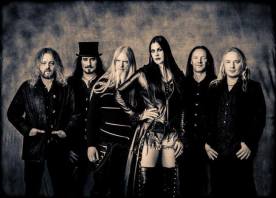 Nightwish – Endless Forms Most Beautiful: Second only to Blind Guardian as my most anticipated album of 2015, I have the highest of hopes for the debut of Floor Jansen as the third Nightwish vocalist. She is perhaps the most adaptable of them all, capable of classical operatics, as well as the wildly versatile pop-rock accessibility of Anette Olzon. Having seen Jansen with the band in concert myself, I thought her most valuable resource as a vocalist was her ability to project power in a way that both Olzon and Tarja were unable to. Simply put, she can belt it out when she wants to, an ability that immediately makes her the metalized equal to Marco Hietala’s soaring, accented tenor. Of course Tuomas Holopainen’s songwriting will be my primary focus of attention, and judging by his choice of song titles, cited inspirational reading, and guest narrator in Richard Dawkins —- we’re in for a thematic album at the very least (something entirely new for the band). Its hard to envision a Nightwish album better than 2011’s Imaginaerum, but here’s to Holopainen giving it his best shot.
Nightwish – Endless Forms Most Beautiful: Second only to Blind Guardian as my most anticipated album of 2015, I have the highest of hopes for the debut of Floor Jansen as the third Nightwish vocalist. She is perhaps the most adaptable of them all, capable of classical operatics, as well as the wildly versatile pop-rock accessibility of Anette Olzon. Having seen Jansen with the band in concert myself, I thought her most valuable resource as a vocalist was her ability to project power in a way that both Olzon and Tarja were unable to. Simply put, she can belt it out when she wants to, an ability that immediately makes her the metalized equal to Marco Hietala’s soaring, accented tenor. Of course Tuomas Holopainen’s songwriting will be my primary focus of attention, and judging by his choice of song titles, cited inspirational reading, and guest narrator in Richard Dawkins —- we’re in for a thematic album at the very least (something entirely new for the band). Its hard to envision a Nightwish album better than 2011’s Imaginaerum, but here’s to Holopainen giving it his best shot. Queensryche – TBA: While Queensryche’s self-titled debut with new vocalist Todd LaTorre was a solid return to form, it had severe flaws. The most glaring of which was song length, most of the cuts on the album hovering in the three to four minute range that could’ve benefited from additional verses or expanded guitar solos. Now with all the legal battle drama behind them, this is Queensryche’s time to truly get back to their progressive metal roots —- especially with their debut at Wacken Open Air (finally!) only eight months away. This is a band that needs to be out there touring with actual modern metal artists, not 80s glam-rock bands, and hopefully their time at Wacken will yield fruit in that regard as well as serve as their re-introduction to the European metal audience as a whole. Oh and getting the album out before that show would be good too.
Queensryche – TBA: While Queensryche’s self-titled debut with new vocalist Todd LaTorre was a solid return to form, it had severe flaws. The most glaring of which was song length, most of the cuts on the album hovering in the three to four minute range that could’ve benefited from additional verses or expanded guitar solos. Now with all the legal battle drama behind them, this is Queensryche’s time to truly get back to their progressive metal roots —- especially with their debut at Wacken Open Air (finally!) only eight months away. This is a band that needs to be out there touring with actual modern metal artists, not 80s glam-rock bands, and hopefully their time at Wacken will yield fruit in that regard as well as serve as their re-introduction to the European metal audience as a whole. Oh and getting the album out before that show would be good too. Savatage at Wacken Open Air: Fifteen years after the last Savatage tour, the band is getting back together for a last hurrah on the biggest stage in the metal universe. Or is it really the last? Chris Caffery recently
Savatage at Wacken Open Air: Fifteen years after the last Savatage tour, the band is getting back together for a last hurrah on the biggest stage in the metal universe. Or is it really the last? Chris Caffery recently 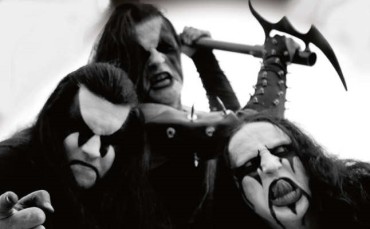 Will Immortal release their new album: I guess I should be asking, is Abbath going to win the rights to the Immortal name so he can release the album that he’s already recorded with other musicians?
Will Immortal release their new album: I guess I should be asking, is Abbath going to win the rights to the Immortal name so he can release the album that he’s already recorded with other musicians? 

 2. Ghost Brigade – IV – One With the Storm:
2. Ghost Brigade – IV – One With the Storm: 3. Dawn of Destiny – F.E.A.R.:
3. Dawn of Destiny – F.E.A.R.:

 6. Primordial – Where Greater Men Have Fallen:
6. Primordial – Where Greater Men Have Fallen: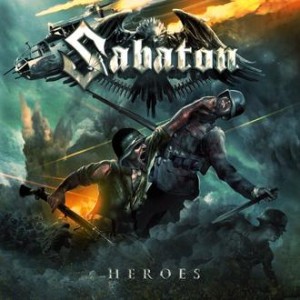 7. Sabaton – Heroes:
7. Sabaton – Heroes:
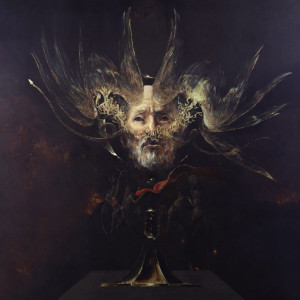 9. Behemoth – The Satanist:
9. Behemoth – The Satanist: 10. Noble Beast – Noble Beast:
10. Noble Beast – Noble Beast: I don’t like to pretend that any of you follow my every move in the world of metal blogging, social media, and related activities. So I’ll safely assume that most of you are unaware that I’ve been co-hosting a metal podcast for a few months now. Its called the MSRcast (named after the long defunct zine Mainstream Resistance) and I join its founder and host Cary G to discuss and debate current events and releases in metal, as well as anything else that’s running through our minds at that moment. MSRcast is going onto its ninth year of existence which might very well make it one of the longest running metal related podcasts out there. In the handful of times I’ve appeared on its episodes throughout this year, first as a guest and finally as an official co-host, the show has undergone a shift in format away from being loaded with music in favor of more discussion and debate. It was a natural progression I think, in that we were trying to keep episode lengths reasonable for podcasts (meaning in the hour and a half-ish range) and we had to make a choice between trimming the amount of songs we played or keeping our chatter to a minimum. Seeing as how the latter would never happen (never!), we decided to cut the amount of songs by half, and to play them one at a time within the flow of our discussions instead of in multi-song blocks.
I don’t like to pretend that any of you follow my every move in the world of metal blogging, social media, and related activities. So I’ll safely assume that most of you are unaware that I’ve been co-hosting a metal podcast for a few months now. Its called the MSRcast (named after the long defunct zine Mainstream Resistance) and I join its founder and host Cary G to discuss and debate current events and releases in metal, as well as anything else that’s running through our minds at that moment. MSRcast is going onto its ninth year of existence which might very well make it one of the longest running metal related podcasts out there. In the handful of times I’ve appeared on its episodes throughout this year, first as a guest and finally as an official co-host, the show has undergone a shift in format away from being loaded with music in favor of more discussion and debate. It was a natural progression I think, in that we were trying to keep episode lengths reasonable for podcasts (meaning in the hour and a half-ish range) and we had to make a choice between trimming the amount of songs we played or keeping our chatter to a minimum. Seeing as how the latter would never happen (never!), we decided to cut the amount of songs by half, and to play them one at a time within the flow of our discussions instead of in multi-song blocks. And finally, in the thrilling(!) conclusion, I present The Metal Pigeon’s Best Albums of 2013, the second and final part of my overall best of the year feature (
And finally, in the thrilling(!) conclusion, I present The Metal Pigeon’s Best Albums of 2013, the second and final part of my overall best of the year feature (
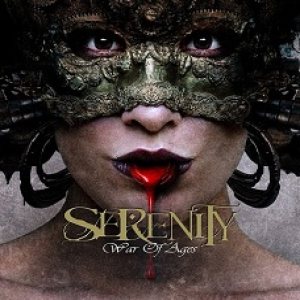 1. Serenity – War of Ages:
1. Serenity – War of Ages: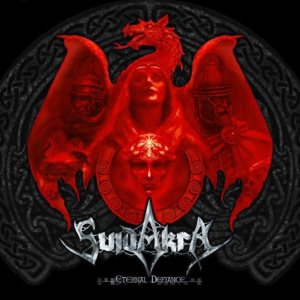 2. Suidakra – Eternal Defiance:
2. Suidakra – Eternal Defiance: 4. Carcass – Surgical Steel:
4. Carcass – Surgical Steel:  5. Falkenbach – Asa:
5. Falkenbach – Asa: 6. Orphaned Land – All Is One:
6. Orphaned Land – All Is One:  7. Rotting Christ – Kata Ton Daimona Eaytoy:
7. Rotting Christ – Kata Ton Daimona Eaytoy: 8. In Solitude – Sister:
8. In Solitude – Sister: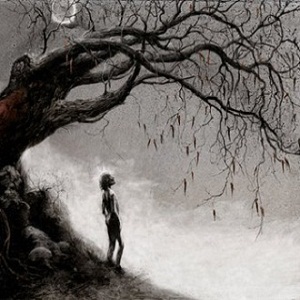 9. October Falls – The Plague of a Coming Age:
9. October Falls – The Plague of a Coming Age:  10. Tribulation – The Formulas of Death:
10. Tribulation – The Formulas of Death:  1. Therion – Les Fleurs Du Mal:
1. Therion – Les Fleurs Du Mal: 2. Pharaoh – Bury the Light:
2. Pharaoh – Bury the Light: 3. Be’lakor – Of Breath and Bone:
3. Be’lakor – Of Breath and Bone: 4. Sabaton – Carolus Rex:
4. Sabaton – Carolus Rex: 5. Barren Earth – The Devil’s Resolve:
5. Barren Earth – The Devil’s Resolve: 6. Anathema – Weather Systems:
6. Anathema – Weather Systems: 7. Kreator – Phantom Antichrist:
7. Kreator – Phantom Antichrist: 8. Dawnbringer – Into the Lair of the Sun God:
8. Dawnbringer – Into the Lair of the Sun God: 9. Enslaved – RIITIIR:
9. Enslaved – RIITIIR: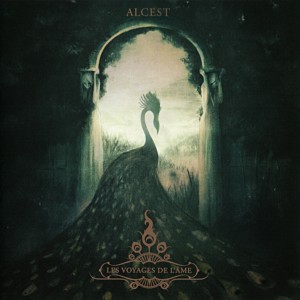 10. Alcest – Les Voyages De L’âme:
10. Alcest – Les Voyages De L’âme: